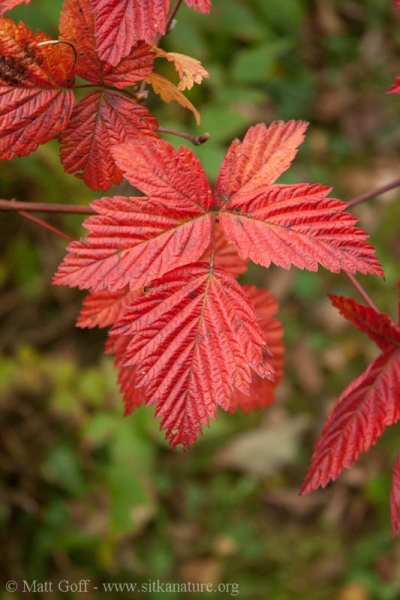These bright red salmonberry leaves caught my eye when I was walking home recently. Salmonberries don’t usually show much color, and to the extent they do, it seems like it is usually just a muted yellow as the leaves transition from green to brown. There were also just a couple of branches with bright red leaves.
Generally speaking, Sitka is not a place you would visit in search of fall colors. The vast majority of vegetated land is covered in evergreen forests. The most abundant deciduous trees (alders) have leaves that fall while still green or they just turn brown with little or no reds and yellows in transition. In some the introduced European Mt. Ash (Sorbus aucuparia) will show a fair amount of yellow and orange, and there are some other introduced trees that will show color as well.
The native plants that I’ve noticed most consistently showing reasonably bright fall colors are smaller plants. These include the dwarf blueberry (Vaccinium caespitosum), Tufted Bulrush (Trichophorum cespitosum), and Deer Cabbage (Nephrophilidium crista-galli). These are not the only ones, but they are the ones that seem most obvious to me (or at least the ones I’m remembering as I write this).
Both the bulrush and blueberries can be found in low elevation muskegs, with the blueberries turn a pinkish color and the bulrush a rather striking yellow. Deer cabbage can also be found at low elevations, but I associate the bright yellow fall colors with plants just above the tree line. Sometimes it is possible to see the patches of bright yellow up on the mountain ridges from some distance away.

